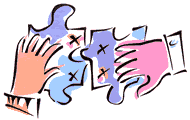Planning RE using the Mind Friendly Framework for Learning
Celebrations, Evaluation
We had decided to consider three different festivals, rather than focusing on just one as suggested in the QCA unit. The children really enjoyed having the variety of festivals to think about and compare.
A lot of their initial questions were based on how we celebrate Christmas and wanting to know if the other festivals had the same practices. The children came up with many questions, which seemed to increase their engagement with the lessons to see if their questions could be answered.
The lessons each took an entire afternoon. It did help that we had read the story of Moses the previous half term and that the children were so familiar with the Christmas story.
When planning this unit I have tried to promote a different intelligence each lesson. When the children were asked which lesson they had enjoyed the most, there was quite a spread across all lessons and all the children said that there was at least one lesson that they had enjoyed.
The final lesson took longer than planned and ran across a couple of afternoons. The children produced several pieces of work though many were swayed in their choice of activity by what their friends decided to do. The activities included a mini play (with scenes from different celebrations), lift the flap posters, word collections, pictures, posters and a collection of three short stories. The finished products were not of the quality I usually expect from the children, but the process that the children chose was of greater importance. All the children in the class were totally engrossed in the activity they had selected, they asked to continue the work the following afternoon, and many wanted to stay in at playtime to finish. The session when we all shared the completed pieces was clearly very important to the whole class, they were keen to show what they had done, but were also keen to see everyone else’s work. The greatest impact was with the lower ability group who grew in confidence as they were able to see other people’s work as “different” rather than “better”.
Finishing by looking at the original set of question balloons and them being able to go through and answer all of their questions was a powerful way of showing how much progress they had made.

